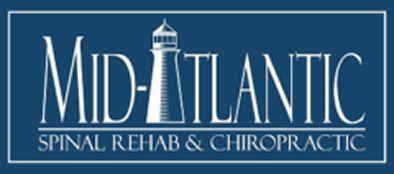Types of Intervertebral Disc Injuries Following Baltimore Car Accidents
As a Baltimore chiropractor that spends a significant amount of my time treating patients in Baltimore auto accidents, it is very common for patients to present for care that have injuries to their intervertebral discs. The discs are the “shock absorbers” that exist between the bones of the spine that function to help in not only decreasing compressive forces of the spine but also in allowing for smooth segmental motion at every level of the spine. This enables the spine to rotate, bend and twist in complex manners which would not otherwise be possible in the absence of all the vertebral segments.
There are a myriad of terms to describe altered disc morphology (shape) that have made their way into our everyday lexicon. Some of these terms include “slipped disc”, “blown disc”, “shredded disc”, “inflamed disc”, “prolapsed disc”, “hot disc”, etc.
The problem with these terms is that they are not universal; that is, they might mean one thing to one person and another thing to another person. Following recommendations of the Combined Task Forces of the North American Spine Society, American Society of Spine Radiology, and American Society of Neuroradiology the nomenclature of disc pathology has been simplifed as follows:
- Disc Bulge
- Disc Herniation (Protrusion, Extrusion)
- Sequestered Disc
In this and the next several blog posts I will discuss the different type of disc injuries and their clinical implications. For now, let’s start with “Disc Bulge.”
Out of all of the different types of disc pathology, the least clinically significant is the “Disc Bulge.” It refers to an extension of disc material beyond the edge of the vertebrae. In many people this is considered “normal” and it can exist with or without pain at a given spinal level. For a disc to be considered a disc bulge, more than 50 percent of disc material needs to extended over the vertebrae. While it is common for disc bulges to extend posteriorly (backwards) into the neural canal, there can also be anterior (ventral) disc bulges.
Most people with disc bulges usually are not even aware that they have them. That is, the disc inflammation or compression is usually a result of repetitive microtraumas over a lifetime rather than one acute injury. Additionally, since the compression and or inflammation is relatively small there is usually little or no neural compression in the spinal canal or the lateral canals. This means that most patients do not usually have associated numbness, tingling, or weaknesses associated with these findings.
While it is true that many patients live their lives with undiagnosed disc bulges in their neck, it is also important to note that these injuries, while not usually caused directly by traumas such as motor vehicle collisions, work-related injuries, or slips and falls, can actually predispose an injured patient to worse pain than had they never had a disc bulge to begin with. That is, the presence of disc bulges renders a patient “pre-weakened” and more likely to be seriously injured following resultant trauma to their spine.
The treatment for disc bulges is conservative management: A patient will undergo a series of treatments that include stretching, moist heat, electric muscle stimulation, and when appropriate, spinal manipulation and/or traction. Some patients with low pain tolerance levels may elect to take medications such as tylenol or advil in addition to muscle relaxers. A diagnosis of disc bulging does not contraindicate spinal manipulative therapy and in fact many patients with these injuries respond well to conservative chiropractic therapy.
In the next several blog posts I will discuss the other different types of disc injuries and their clinical presentations and treatment.
If you, or someone you know has been experiencing neck pain with or without disc bulges, please contact Mid-Atlantic Spinal Rehab & Chiropractic at (443) 842-5500. We would be happy to help!
Dr. Gulitz
